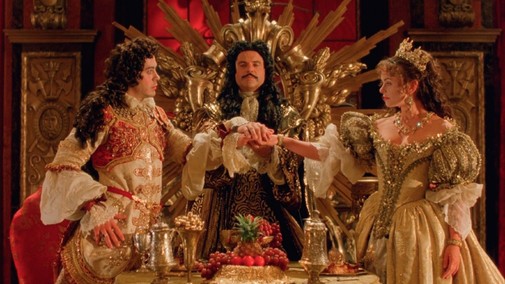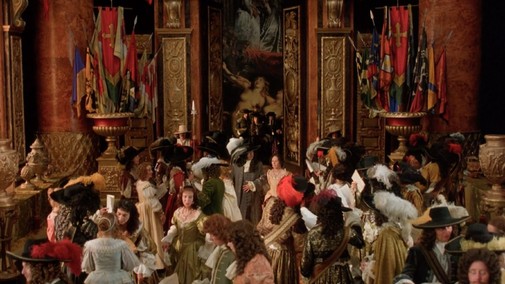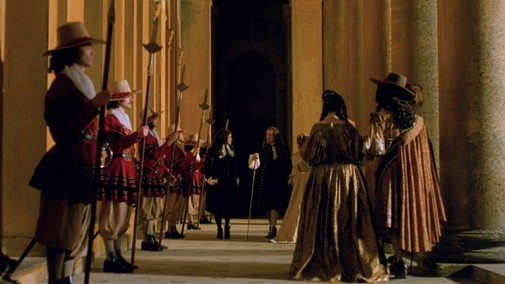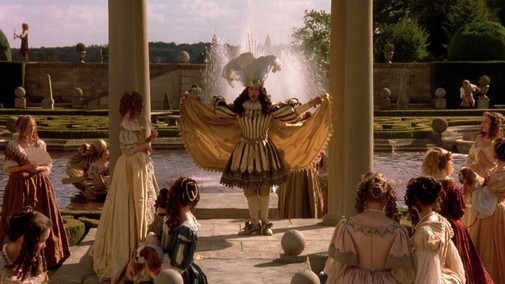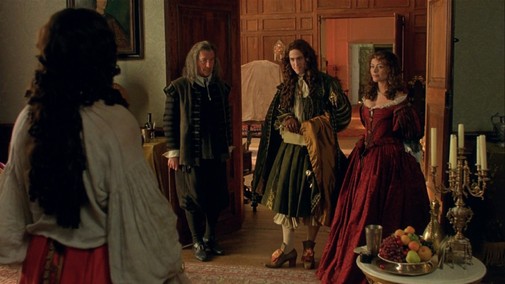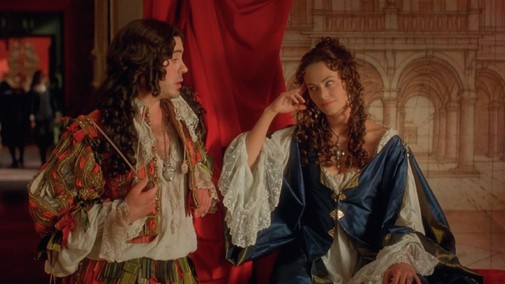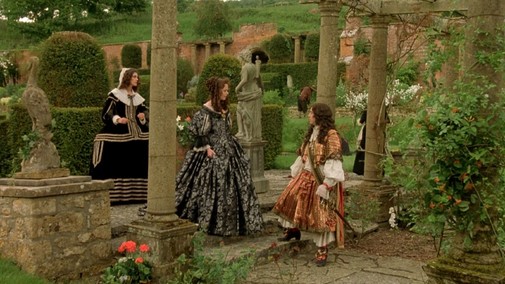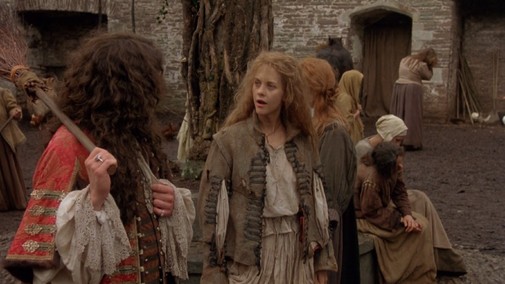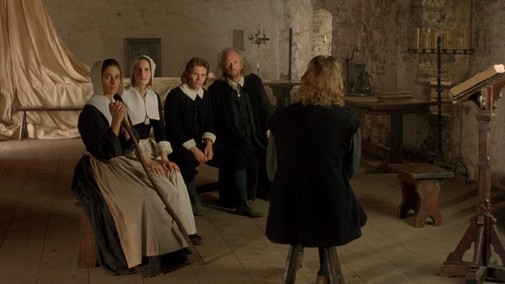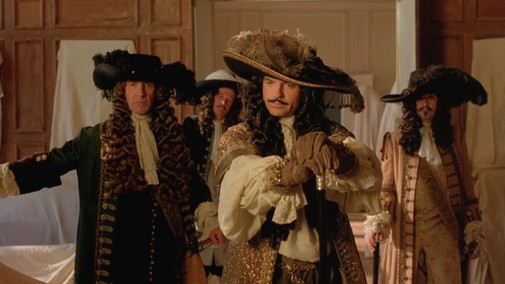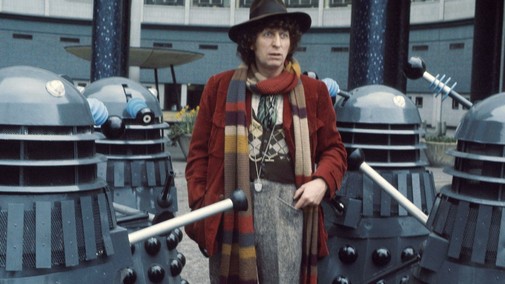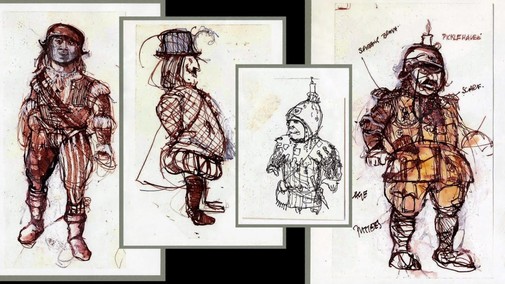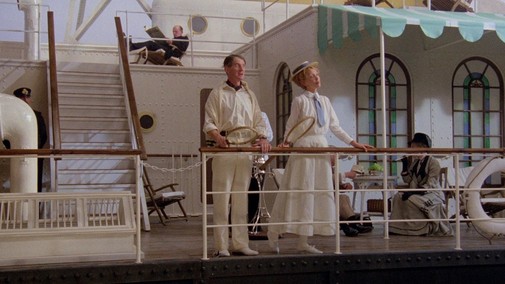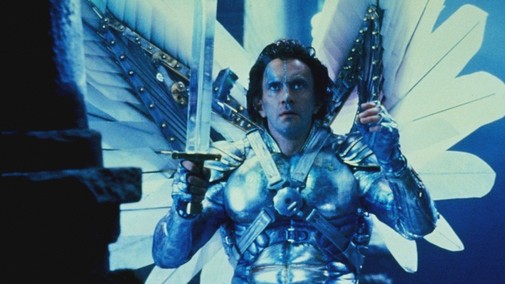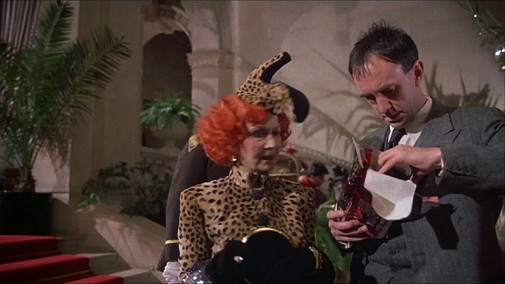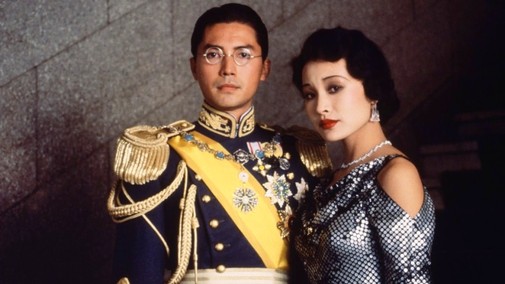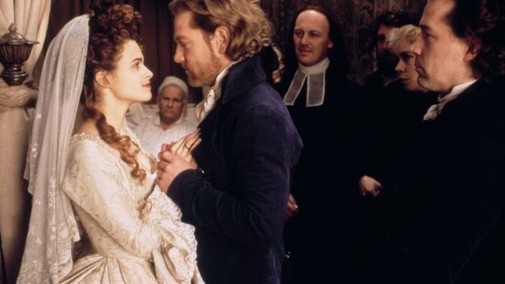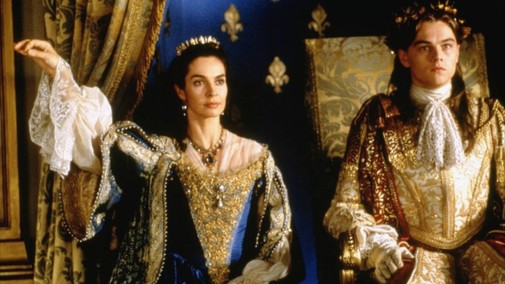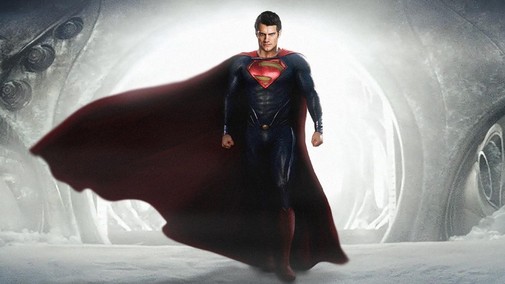In 1995, Michael Hoffman's Restoration adapted the best-selling novel of Rose Tremain into a sumptuous dramatization of 17th century England. Despite some dumbfounding feats of miscasting and a disjointed structure upended by the advent of the Black Plague, the picture's quite beautiful to look at and features some of the best Baroque designs in film history. The scenography leans into the theatricality of Charles II's court, creating an airless world gilded in gold. The costumes, in turn, indulge in the absurdities of 1660s fashion, conjuring a world of radical contrasts between royal splendor and the austere rigor of Puritan charity.
Both achievements won trophies at the 68th Academy Awards. As usual, I'm more interested in the work of Oscar-winning costume design by the great James Acheson. Let's explore the man's genius, his filmography, and the Baroque stylings of the 25-year-old Restoration…
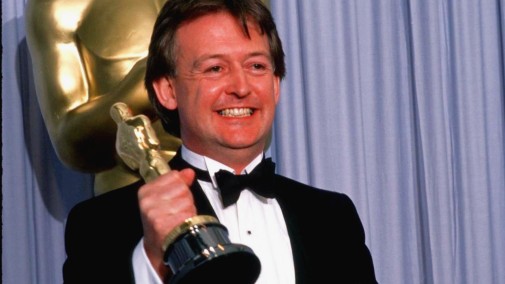
Acheson's career spans over five decades, including both film, TV, theatre, and opera, an abundance of period dramas as well as sci-fi, surrealist comedy, and even superhero blockbusters. His first big break came in the 70s when, working for BBC, Acheson costumed over thirty episodes of Doctor Who, and later worked repeatedly with Monty Python on their cinematic adventures. By the mid-80s, he was a renowned costume designer.
His exactitude when recreating historical fashions was as impressive as his ability to stretch small budgets into museum-worthy wardrobes. Those talents earned him two consecutive Oscar wins, for 1987's The Last Emperor and 1988's Dangerous Liaisons. Restoration brought him a third richly-deserved victory. These three films share remarkable and unusual attention to detail, a willingness to reproduce the reality of past fashions without adapting them to the demands of modern taste.
Acheson may design dramaturgically precise costumes, complementing narrative and characterization, but he does this within the parameters of archaic style, never letting himself be cowered by the audience's potential alienation. Fittingly, the artist has credited the Italian master of period costuming Piero Tosi as one of his greatest inspirations and influences. Restoration represents what's perhaps the greatest and most flagrant manifestation of this design ethos.
Telling the story of a social-climbing physician in Charles II's England, the picture sees the protagonist, played by Robert Downey Jr., going through a huge style evolution. He starts in démodé attire, looking like he's still stuck in Cromwell's rule due to his lack of funds. After healing one of the king's beloved cocker spaniels, his fates change and he becomes a member of the court, frugal style transmuting into a golden clown trimmed in ribbon and lace. Once he falls from grace, that golden look fades, dirt smudging the silk, and a new doctor is born complete with Plague masks, waxed cotton, and leather robes.
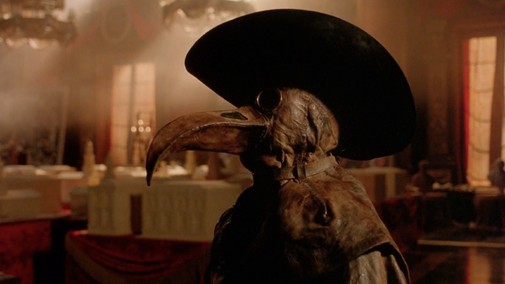
While the hero may go through the most noticeable arc in costume design, every character is precisely dressed, from the grandest monarch to the destitute pauper. Extras get as splendid clothes as the main players, resulting in an immersive experience for the viewer. Considering the film's small budget, this is doubly impressive and Acheson had to employ many theatrical illusions to make it possible, including the use of cheap molded plastic to simulate lace and metal. There's also a richness of minute and smart detail that ranges from the comedic to the realist.
For example, it's difficult not to chuckle at Downey Jr.'s silly bouts of Orientalism or Hugh Grant dressed in green from head to toe. On the opposite end of the spectrum, Meg Ryan's degraded men's jacket speaks of harsh pragmatism as does the fact the protagonist is hard-pressed to depart with a fur-trimmed frock coat even as his approach to life changes. 17th century England's a cold place, after all, and expensive materials aren't just a matter of opulent spectacle.
All in all, it was a great Oscar win despite being up against two of the most popular Best Picture contenders, Sense & Sensibility and Braveheart, the time travelling sci-fi work 12 Monkeys and the anachronisms of Richard III.
Here are 10 other highlights from James Acheson's filmography so that we can gush over the eye candy together...
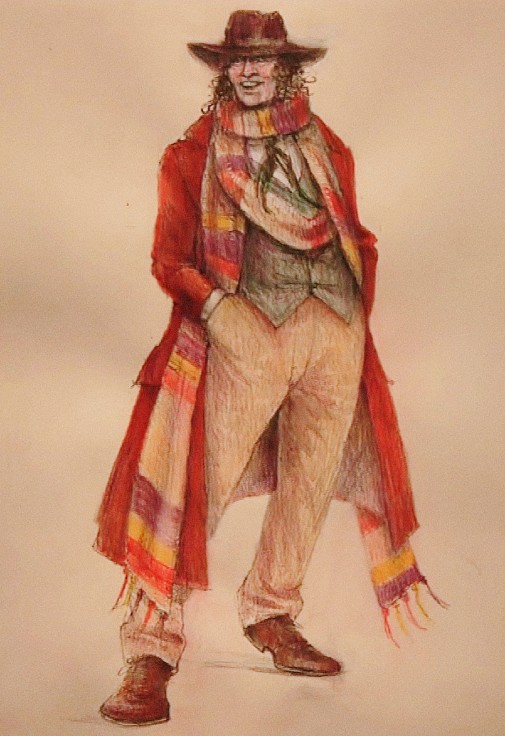
DOCTOR WHO (1972-1976)
Legend has it that Acheson asked a friend to knit him the Fourth Doctor's iconic scarf. Though, as he had given no specifications of length, the knitter didn't know when to stop resulting in an absurdly long piece. Acheson's original sketch tells a different story from this lucky accident. Either way, it's an iconic look.
THE TIME BANDITS (1981)
Between fantasy and historical time-hopping, this film features an impressive variety of looks. One might suppose Acheson would forego accuracy when dressing a fantastical comedy, but the visual splendor of The Time Bandits is as acute as that of his subsequent period dramas.
BRAZIL (1985)
Terry Gilliam's grand opus is a showcase for some of Acheson's kookiest creations. From Jonathan Pryce's angelic armor to Katherine Helmond's Schiaparelli-inspired millinery, it's all jolly lunacy that looks as if it came straight out of a nightmare.
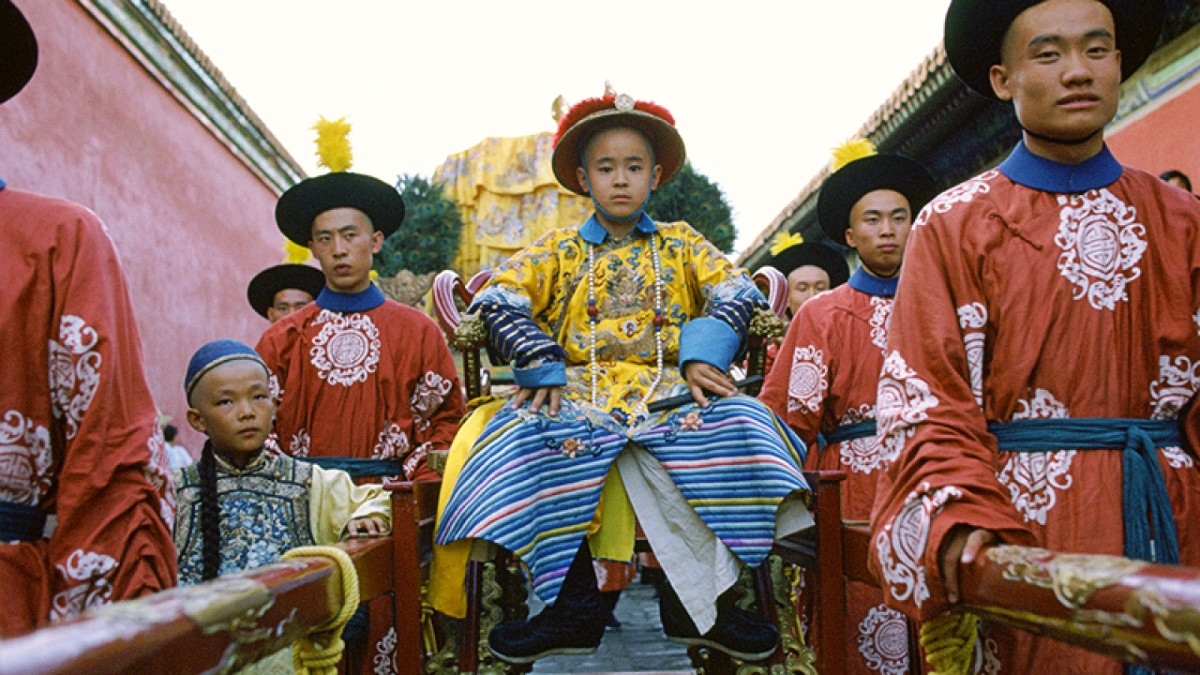
THE LAST EMPEROR (1987)
As discussed previously, Acheson's creation of this epic's epic wardrobe is as much a technical marvel as a dramaturgical triumph. One can trace the protagonist's arc through his clothes as well as the story of a nation going through painful changes, revolutions, and cultural chasms.
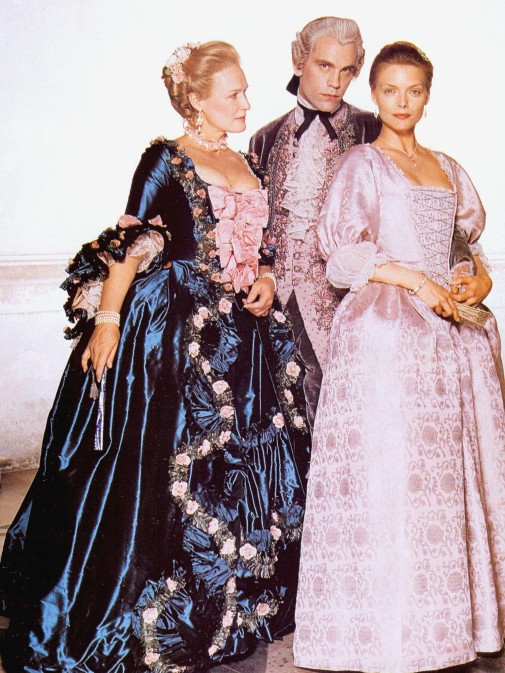
DANGEROUS LIAISONS (1988)
This is Rococo styling that's so historically accurate one can't help but stare open-mouthed at the screen, speechless and in awe. Best of all, Acheson uses the period specificities to build complex characters, juxtaposing the hedonistic venom of the protagonists with their innocent victims. Glenn Close's Pompadour-esque robes à la française and Michelle Pfeiffer's Brunswick jacket are particularly impressive.
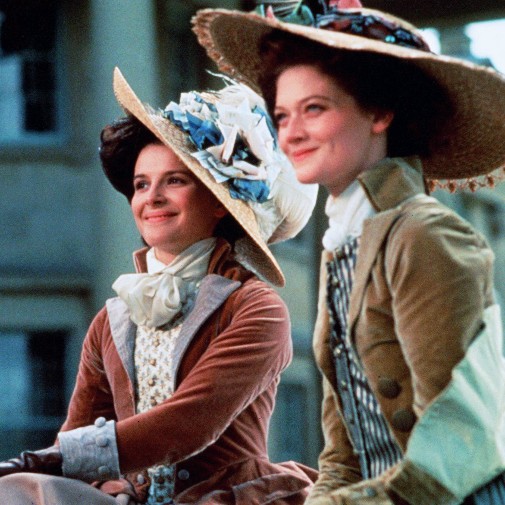
WUTHERING HEIGHTS (1992)
From time-traveling narratives to lavish historical dramas, Acheson has shown a great aptitude for dramatizing the evolution of fashion, creating parallel narratives that run alongside his scripts. Wuthering Heights, with its decade-spanning story, is another example of the designer's talents.
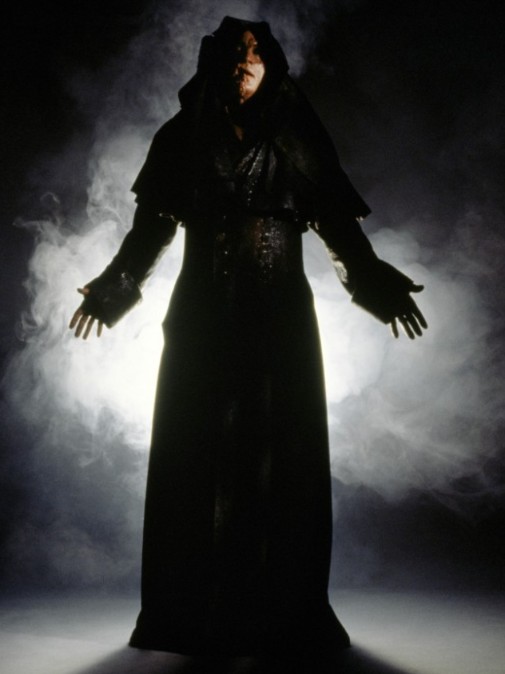
MARY SHELLEY'S FRANKENSTEIN (1994)
A literary adaptation whose use of an 18th-century setting both enchants and horrifies, the era's fashion twisted into exaggerated silhouettes. Through Acheson's creations, the classic horror tale gains an opera's grandiosity as well as a tragic tinge that's better exemplified by the monster's old coat and Helena Bonham Carter's decayed wedding gown.
THE MAN IN THE IRON MASK (1998)
After recreating Charles II's court, it seems only appropriate that Acheson would dress the other iconic monarch of late-17th century Europe, Louis XIV. This 90s update on the swashbuckler genre is opulent and colorful, a living painting of valiant musketeers, traitorous kings in gold brocade, and mournful queens with lace veils.
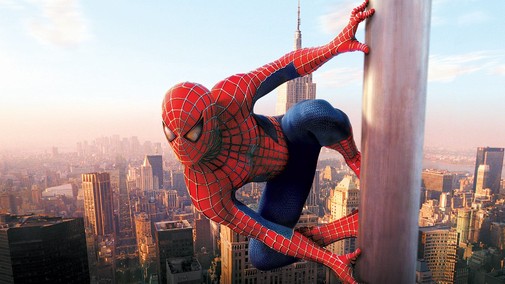
SPIDER-MAN (2002-2007)
Even though technology has become better since the dawn of the aughts, no designer has made a better Spider-Man costume than James Acheson. His use of intricate textures and subtle patterns to breathe life into the comic book icon is brilliant.
MAN OF STEEL (2013)
After Spider-Man and Daredevil, it seems Acheson traded in period dramas for superhero fashion. Our world's very own Edna Mode created Superman's latest suit, a grand achievement that could have been improved by some brighter colors. Still, the costume designer's skill is both inescapable and undeniable.
You can rent Restoration from most services like Amazon, Google Play, and Youtube.
